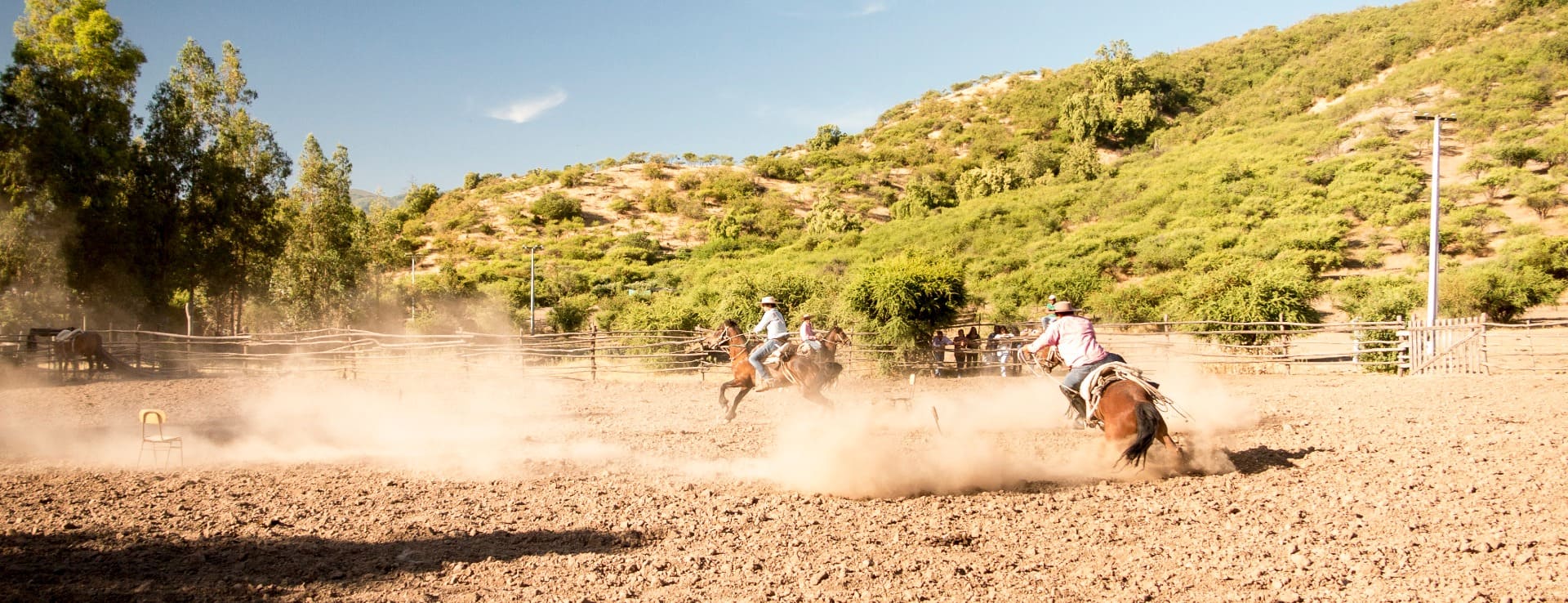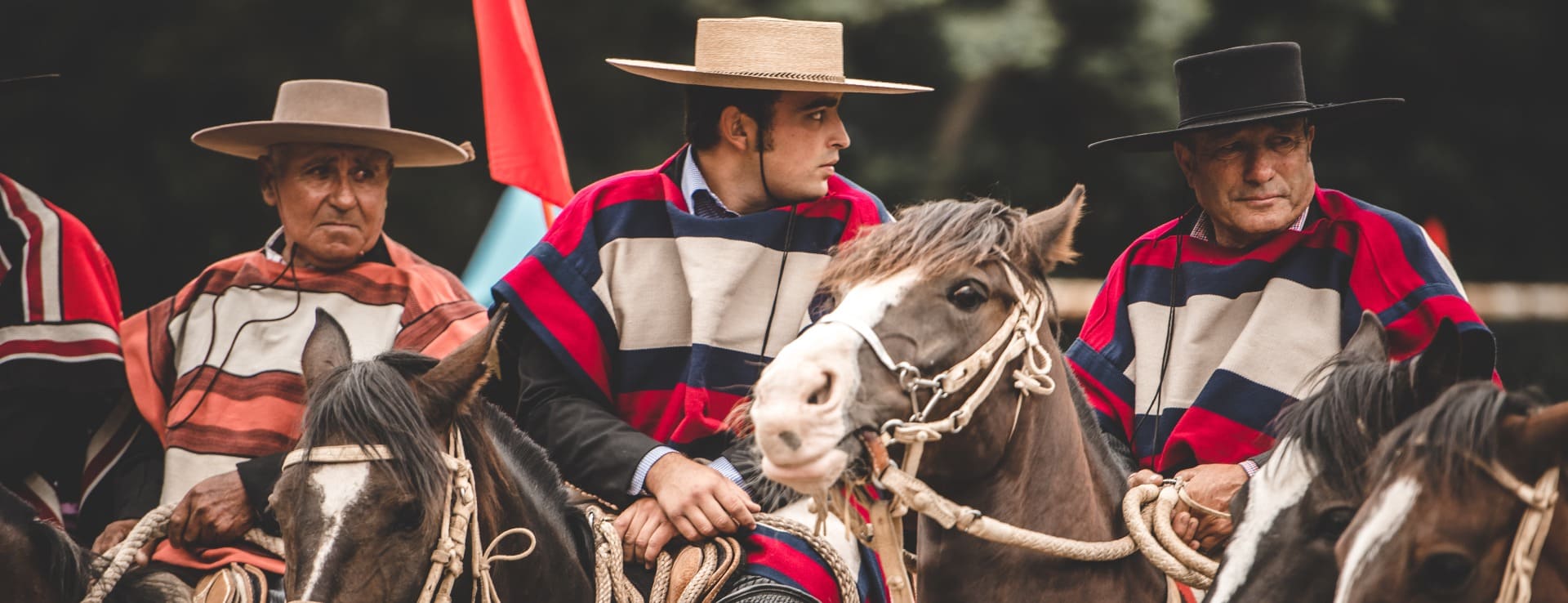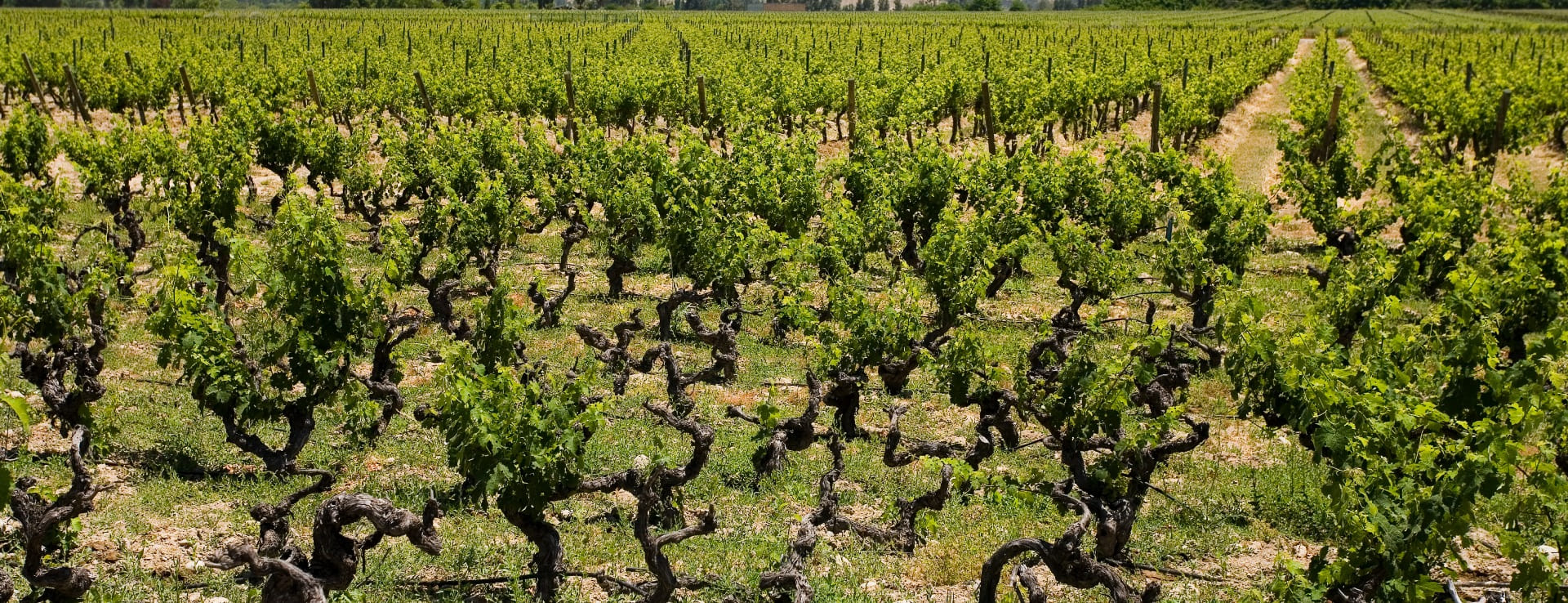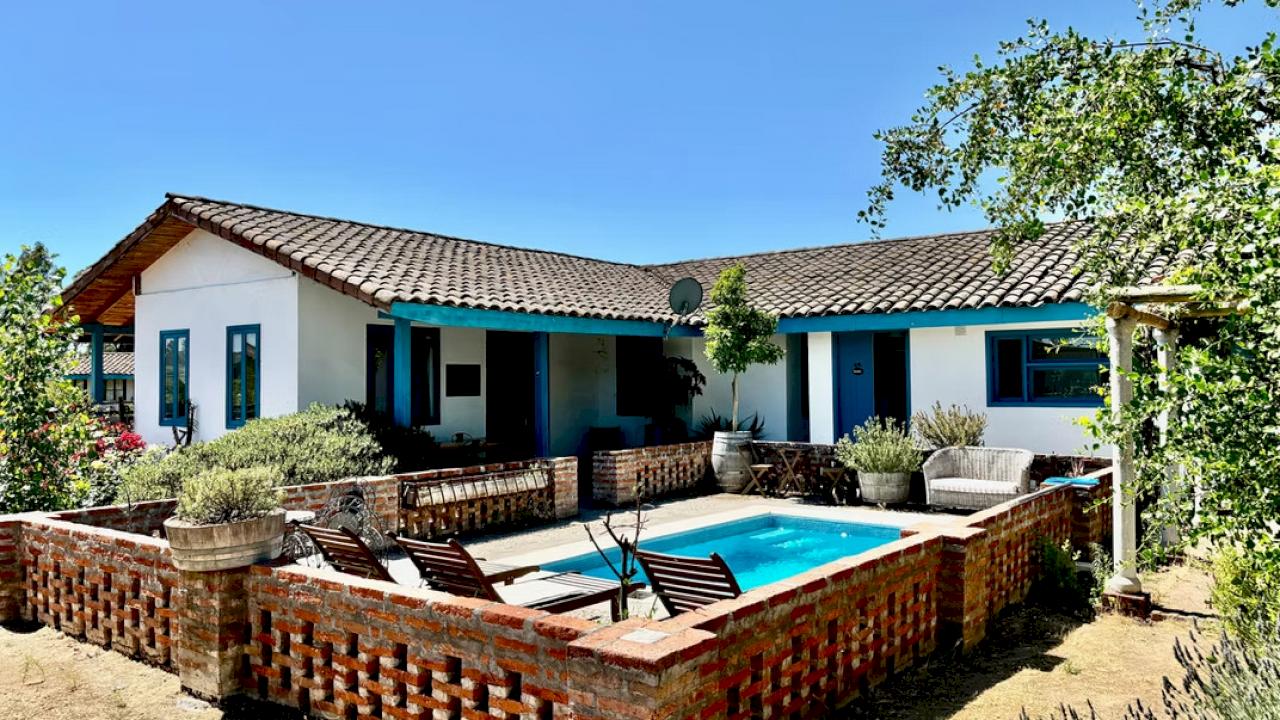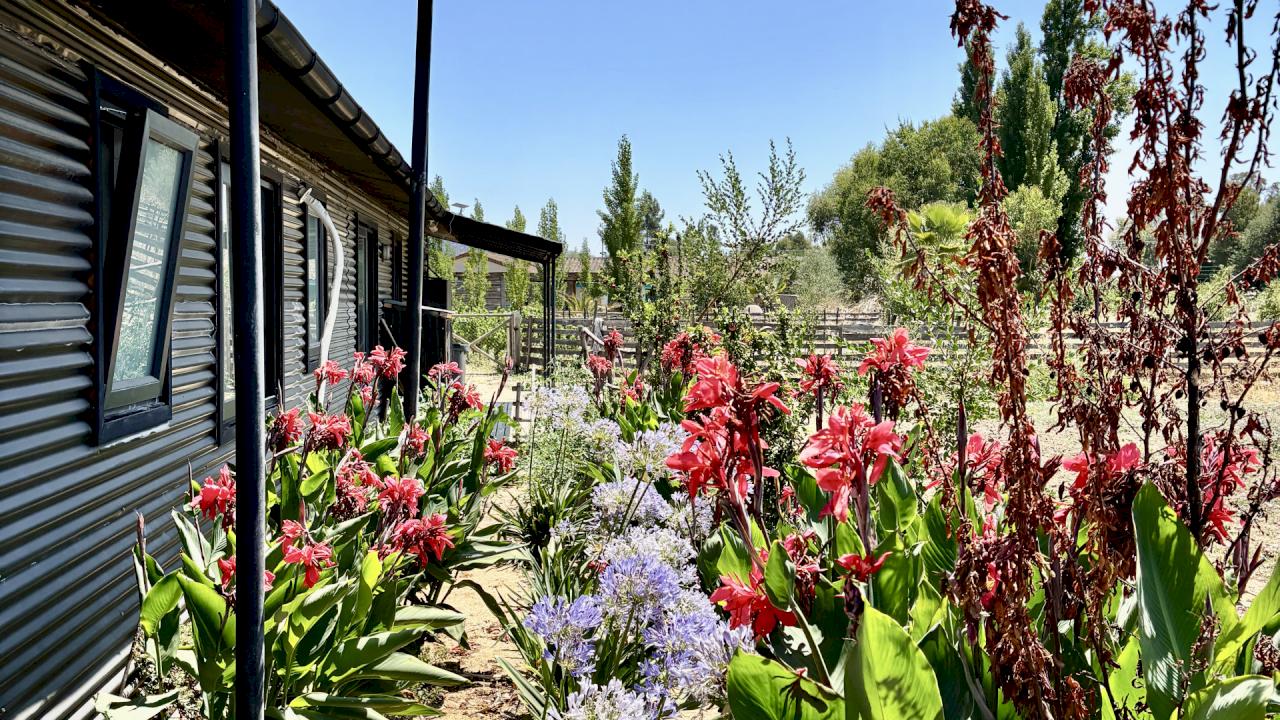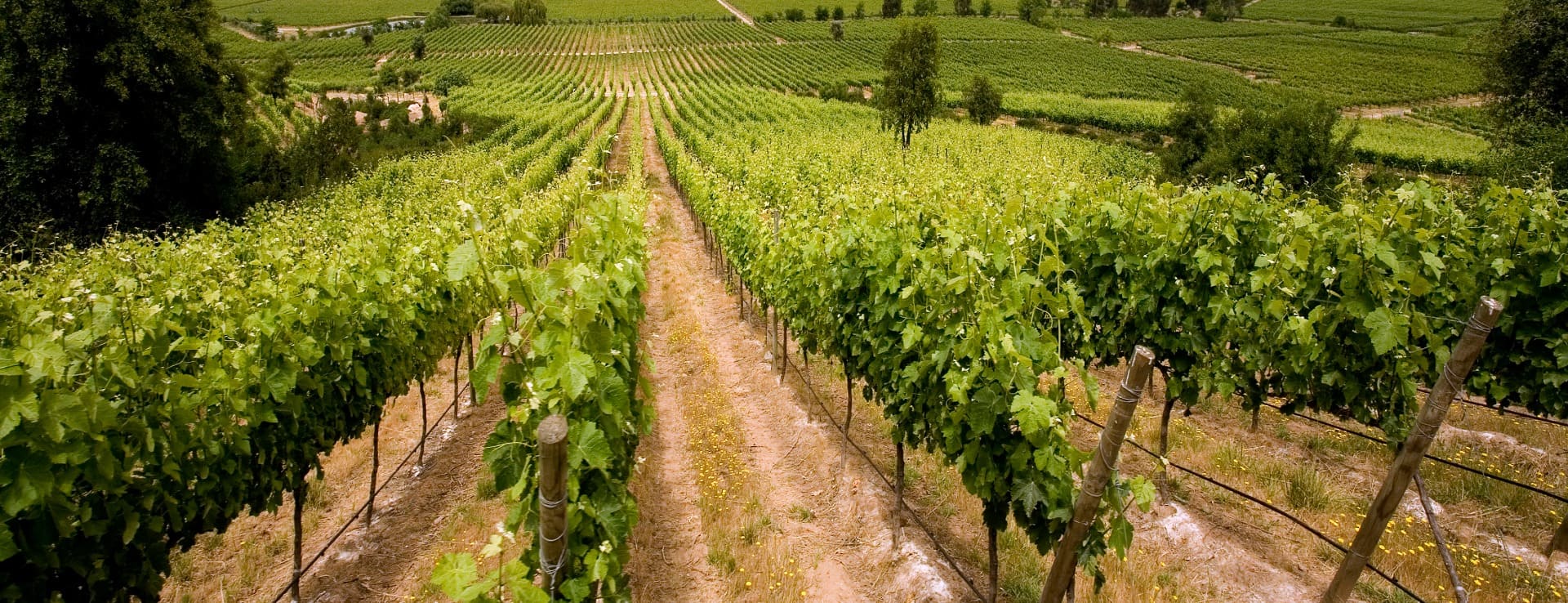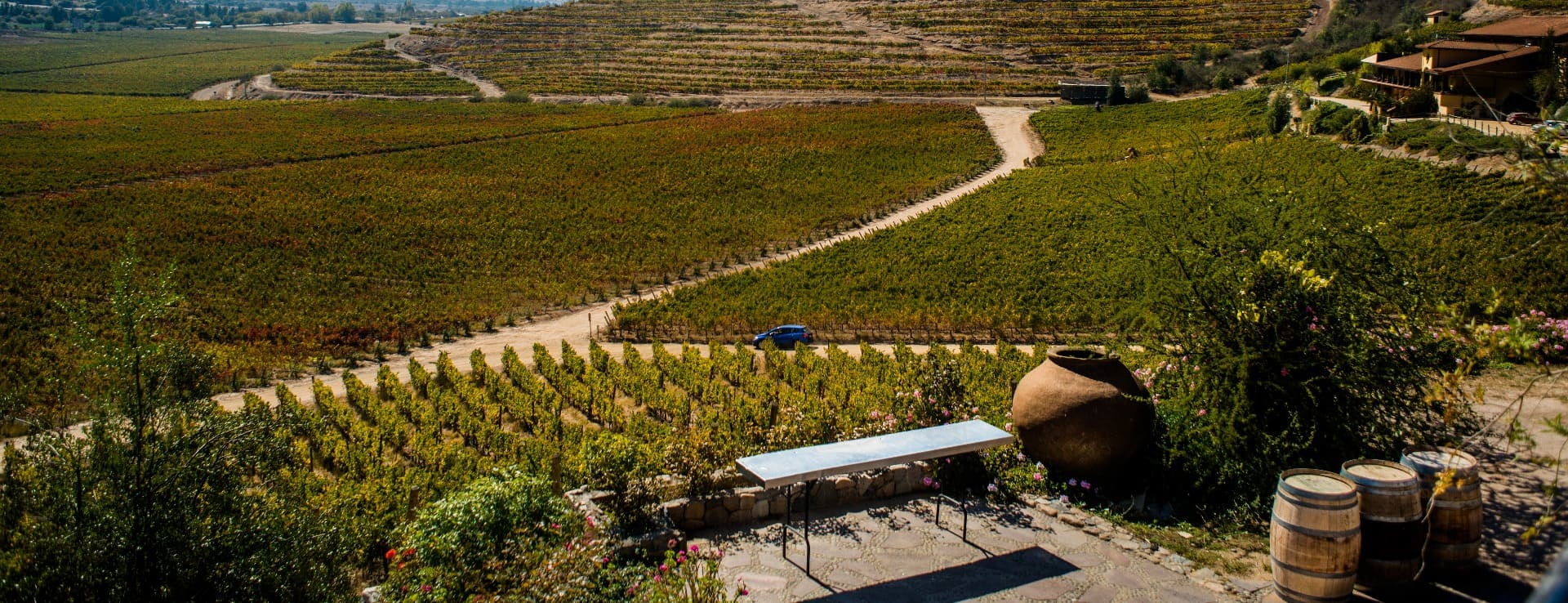Find your winery or vineyard
8 Wineries and Vineyards for sale in Colchagua
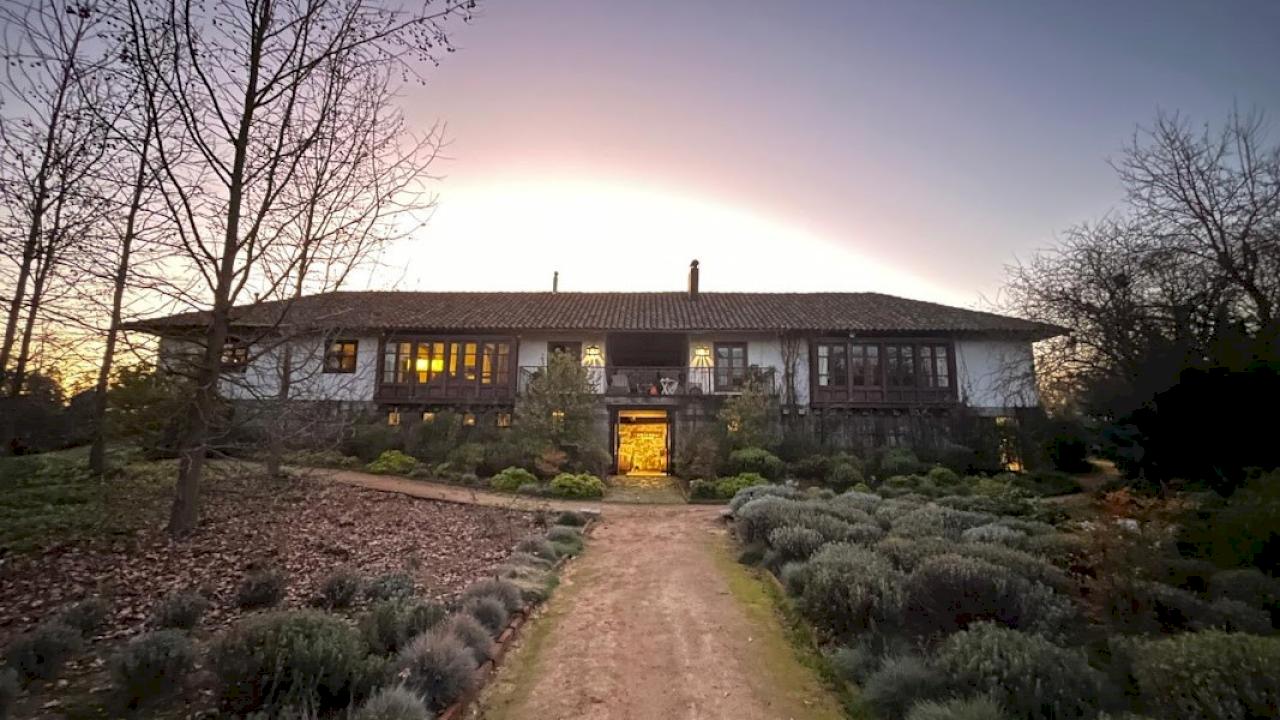
STUNNING COLONIAL-STYLE HOME, VINEYARD AND WINERY
Colchagua
≈ 2.418.000.000 CLP
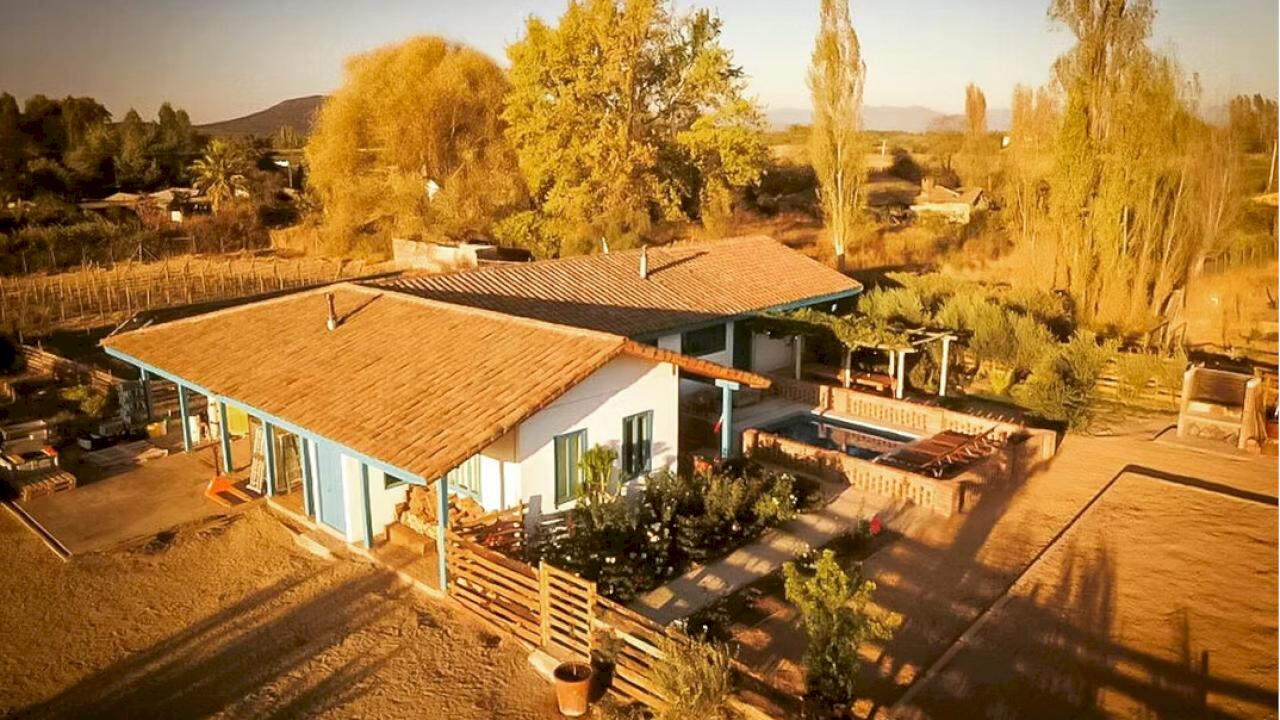
GENUINELY UNIQUE BOUTIQUE WINERY, HOTEL AND HOME
Colchagua
≈ 1.395.000.000 CLP
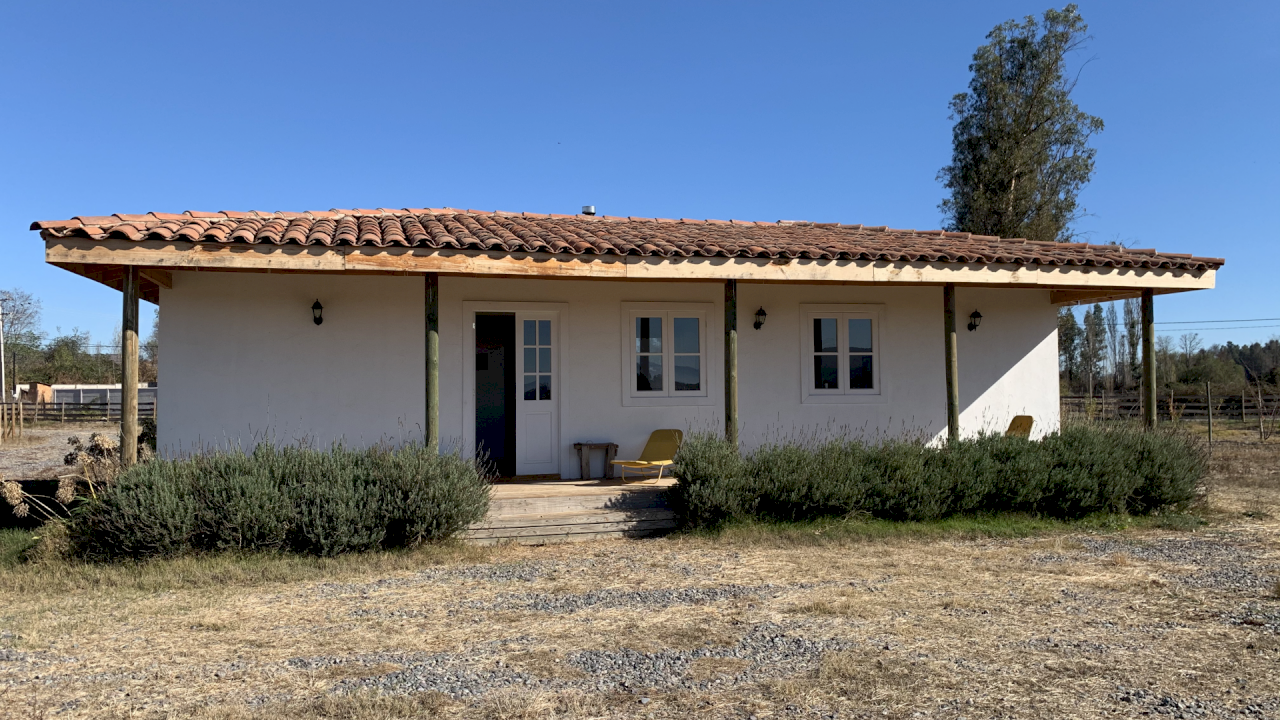
CHARMING COLONIAL-STYLE COTTAGE WITH BOUTIQUE VINEYARD
Colchagua
≈ 446.400.000 CLP
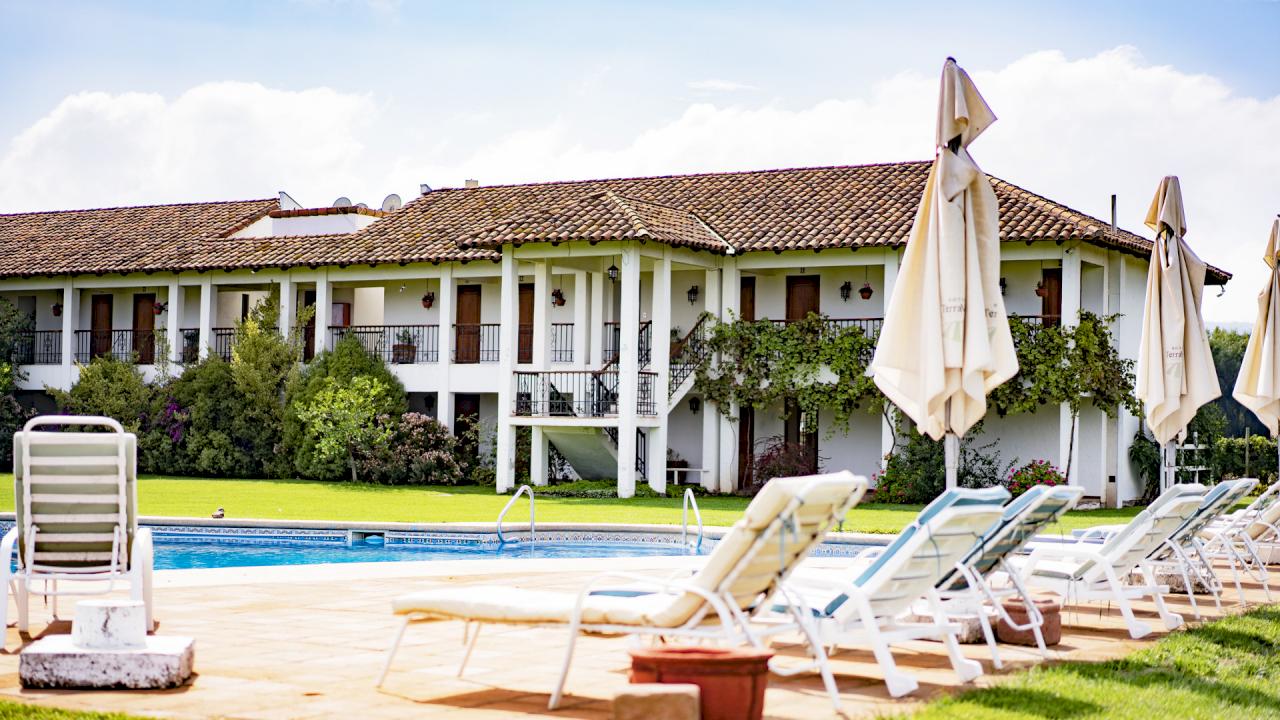
BEAUTIFULLY DESIGNED HOEL IN A FANTASTIC LOCATION
Colchagua
≈ 4.287.300.000 CLP

BEAUTIFUL HOME WITH HIGHLY PROFITABLE CHERRY PLANTATION
Colchagua
≈ 651.000.000 CLP
Infographic of the Denomination of Origin
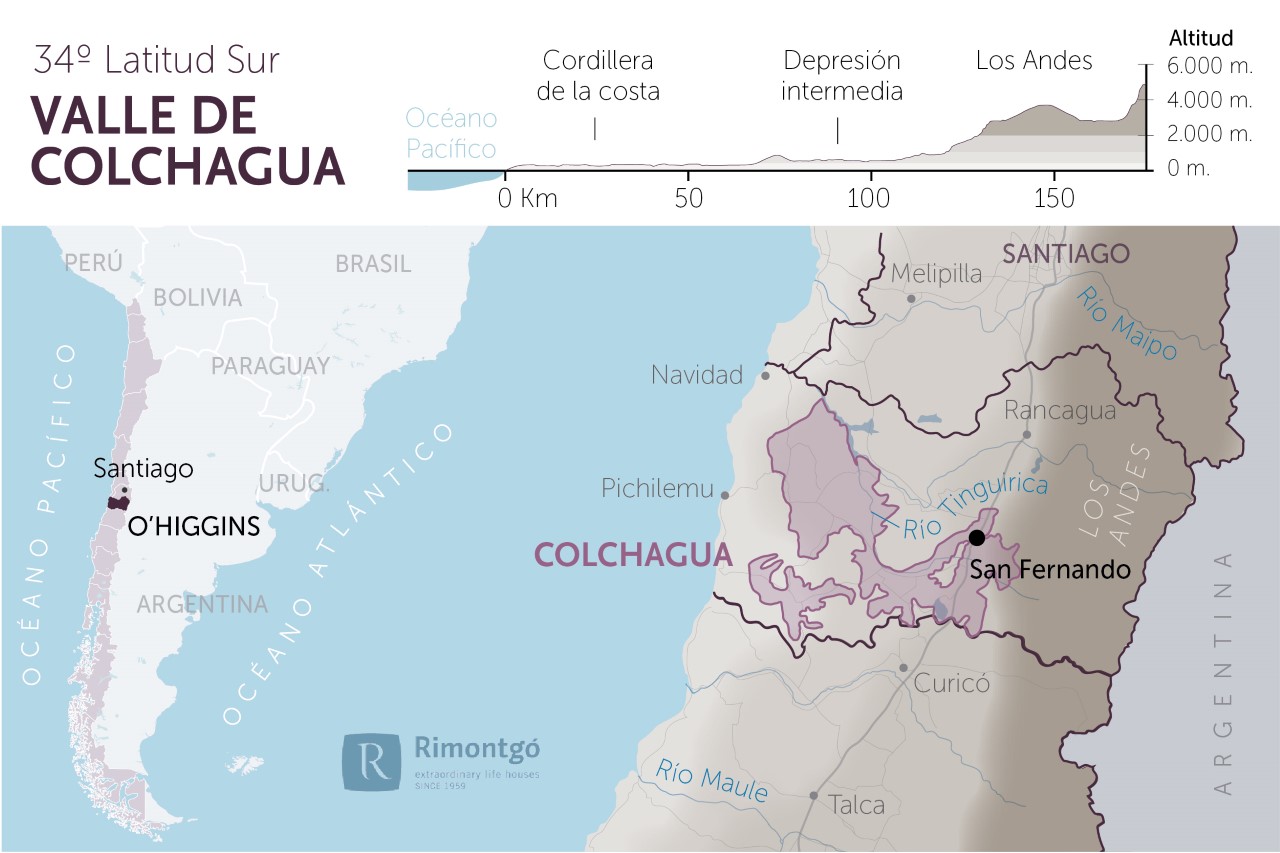
Change to imperial units (ft2, ac, °F)Change to international units (m2, h, °C)
Number of wineries (2017):
81
Total surface area:
32.000 ha79.072 ac
Altitude of the vineyards:
Min: 100m
Max: 1.200m
Min: 328ft
Max: 3.937ft
Temperature:
Min: 4º
Max: 28º
Min: 39°F
Max: 82°F
Yearly rainfall:
592 l/m255 l/ft2
Colchagua
The Colchagua province, with capital in the city of San Fernando, is one of the three provinces of the O’Higgins region and has a population of about 222,000 people. This is a province with a high percentage of rural population, which is over 80% of the total inhabitants.
HISTORY OF WINE
In 1828, with the Republic recently consolidated, the Chilean government invited the famous French naturalist Claudio Gay, a distinguished viticulture scholar. It is valid to declare him as the precursor of the 19th century viticulture who established the bases in order to make Chile the first producer of fine wines in America. Almost all oenologists of that time were from Bordeaux, thus favoured the cultivation systems of that zone. In this second era of Chilean viticulture – being the first one the Colonial viticulture – it is important to note the mark of the French influence from the 19th century.
As the 19th concluded, the winemaking industry was in a development state similar to that of the most advanced European countries. The cultivation of noble grave varieties of European origin was consolidated, French technicians supervised and manged the finest vines and their model was quickly imitated. Another of the features of the founding Colchagua wineries that are exceptional is the extraordinary architecture and functionality, all of them built by French or European architects, exclusively invited to design and supervise the constructions with underground surface and a series of technical details that show the presence of experts on the field.
During the 20th century the winemaking industry was the agricultural activity was the most important activity in the country. The owning of vineyards was a synonym of wealth.
WINES AND WINERIES
The first wine route created in Chile originated in the Colchagua Valley, province of Colchagua, in 1996, along the wine route, the route I-50 that crosses the province in a north-south direction towards the Pacific Ocean. In this first route wineries of the province such as Lapostolle, Casa Silva, Montes, Laura Hartwig, Estampa or Montgras were integrated. In this province, vine cultivation was also introduced by the Jesuit order. Currently, the province has 19 wineries. In addition to those already mentioned, we can find the wine companies such as Bisquert, Los Vascos, Las Niñas, Emiliana, Gracias de Chile, Montes, Luis Felipe Edwards, Neyen, Ventisquero, Viña Sutil, Errazuriz and Viu Manent.
The small colonial city Santa Cruz is a reference point. From here, all the best wineries in Colchagua can be visited. Some former colonial houses have been restored and converted into hotels for tourists that arrive from the Colchagua wine train that goes from the Colchagua valley to Santa Cruz, a lovely colonial city where is found the Hotel Santa Cruz Plaza, considered one of the most beautiful houses in Chile.
One of the most well-known wineries in the Colchagua province is Viña Santa Cruz that has an added bonus, such as the funicular that ascends up to the hill, El Chamán, where is situated a non-scientific astronomical observatory, available to visitors. Along this route, excellent views of the Colchagua Valley as well as accurate rebuildings of indigenous peoples’ properties such as the Mapuche, Rapanui or Aymará.
Another interesting option is to go all over the province and in particular the Colchagua Valley on board the Colchagua wine train, propelled by a steam locomotive, that goes along vineyards while the traveller has the opportunity to taste different wines.
Wines such as Montes Alpha, Folly and Clos Apalta are considered icons of the Chilean wine industry. This wine region became internationally known thanks to the production of high-quality wines, its cultural heritage, traditions, as well as the excellent offer in the sector of wine tourism. These qualities made the American specialised magazine “Wine Enthusiast” to choose the Colchagua Valley as the “Winemaking region of the year”.
POINTS OF INTEREST
In addition to the wine route already mentioned, in the Colchagua province, a wide variety of attractions are located, specially indicated for nature lovers and enthusiasts of outdoor sports, as trekking and mountain bike routes are highly used both for the inhabitants of the province itself and the tourists coming from other Chilean regions thanks to the beauty of the natural landscapes. Another point of interest in the area is the Colchagua Museum that has a wide collection of vintage cars that will delight antique cars enthusiasts. One of the most visited places in the province is the Hacienda San José del Carmen El Huique, an antique summer residence for presidents of the country which was restored to recover its original aspect as it dates back to the 18th century.
D.O./Valle (wine regions)
Discover more wineries and vineyards for sale in these wine regions in Chile
Subscribe to our mailing list to receive news about wineries and vineyards.

